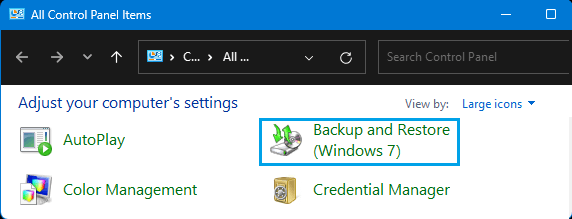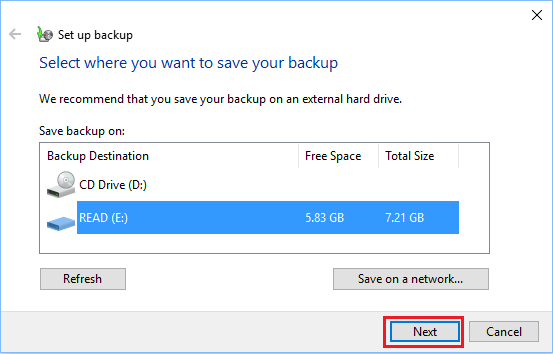The legacy Backup and Recovery Tool (Windows 7) is still available in Windows 10/11 and it can be used to create a System Image Backup of your computer.
The System Image backup can be described as a Snapshot of your computer at a given point of time and it includes all your Files, Photos, Apps, Programs, Operating system files, Settings and almost everything as available on the computer.
Once a System Image is created, it can be used to recover all your data and restore your computer back to its original working condition.
Create System Image Backup in Windows 11/10
Windows provides the option to store the System Image on an external Storage Drive attached to the computer and also to a network location.
If you are interested in storing the system image on a USB Drive, make sure that the USB Drive is formatted with NTFS and it has sufficient storage capacity to store the system image.
Steps to Create System Image Backup
You can follow the steps below to create a System Image Backup of your computer on a USB Flash Drive or an External Hard Drive attached to your computer.
1. Plug the External Hard Drive or USB Flash Drive to the USB Port of the computer.
2. Type Control Panel in the Search bar and click on Control Panel Desktop App in the search results.
3. On the Control Panel screen, switch to Large Icons view and click on Backup & Restore (Windows 7).

4. On the next screen, click on Create a System Image option.

5. On the next screen, select the External Drive where you want to store the System Image Backup and click on Next.

6. Patiently wait for the computer to complete the process of Creating System Image Backup.
The time to create a System Image can vary, depending on the amount of data available on the computer. When the System Image backup is completed, you will be asked if you want to create a System Repair Disk.
The System Repair Disk can used to gain access to your computer, if you get locked out of the computer due to a crash or other reasons.